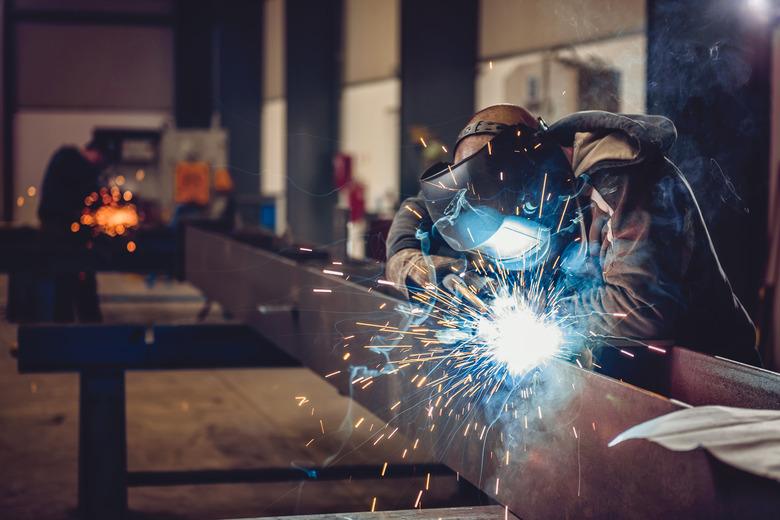Types Of Gas Welding
Gas welding involves the use of a gas-fed flame torch to heat the metal work piece and the filler material to create a weld. The gas is generally a mixture of a fuel gas and oxygen to create a clean, hot flame. Many different gases can be used as fuel for gas welding, and electricity is not needed to power the welding system, resulting in a flexible and portable fabrication method. All gas welding techniques require proper safety equipment for the welder and storage of the welding gases.
Oxy-Acetylene Welding
Oxy-Acetylene Welding
Oxy-acetylene welding uses a mixture of acetylene gas and oxygen gas to feed the welding torch. Oxy-acetylene welding is the most commonly used gas welding technique. This gas mixture also provides the highest flame temperature of available fuel gases, however acetylene is generally the most expensive of all fuel gases. Acetylene is an unstable gas and requires specific handling and storage procedures.
Oxy-Gasoline Welding
Oxy-Gasoline Welding
Pressurized gasoline is used as a welding fuel where fabrication costs are an issue, particularly in locations where acetylene canisters are not available. Gasoline torches can be more effective than acetylene for torch-cutting thick steel plates. The gasoline can be hand-pumped from a pressure cylinder, a common practice by jewelry makers in impoverished areas.
MAPP Gas Welding
MAPP Gas Welding
Methylacetylene-propadiene-petroleum (MAPP) is a gas mixture that is much more inert than other gas mixtures, making it safer for hobbyists and recreational welders to use and store. MAPP can also be used at very high pressures, allowing it to be used in high-volume cutting operations.
Butane/Propane Welding
Butane/Propane Welding
Butane and propane are similar gases that can be used alone as fuel gases or mixed together. Butane and propane have a lower flame temperature than acetylene, but are less expensive and easier to transport. Propane torches are more frequently used for soldering, bending and heating. Propane requires a different type of torch tip to be used than an injector tip because it is a heavier gas.
Hydrogen Welding
Hydrogen Welding
Hydrogen can be used at higher pressures than other fuel gases, making it especially useful for underwater welding processes. Some hydrogen welding equipment works off electrolysis by splitting water into hydrogen and oxygen to be used in the welding process. This type of electrolysis is often used for small torches, such as those used in jewelry making processes.
Cite This Article
MLA
Kristoff, Susan. "Types Of Gas Welding" sciencing.com, https://www.sciencing.com/types-welding-gas-5474325/. 13 March 2018.
APA
Kristoff, Susan. (2018, March 13). Types Of Gas Welding. sciencing.com. Retrieved from https://www.sciencing.com/types-welding-gas-5474325/
Chicago
Kristoff, Susan. Types Of Gas Welding last modified March 24, 2022. https://www.sciencing.com/types-welding-gas-5474325/
